Preceded by Position established Spouse Saba Haile Preceded by Romodan Mohammed Nur Succeeded by Sebhat Ephrem | Preceded by Position established Role President of Eritrea Preceded by Tedla Bairu Name Isaias Afwerki | |
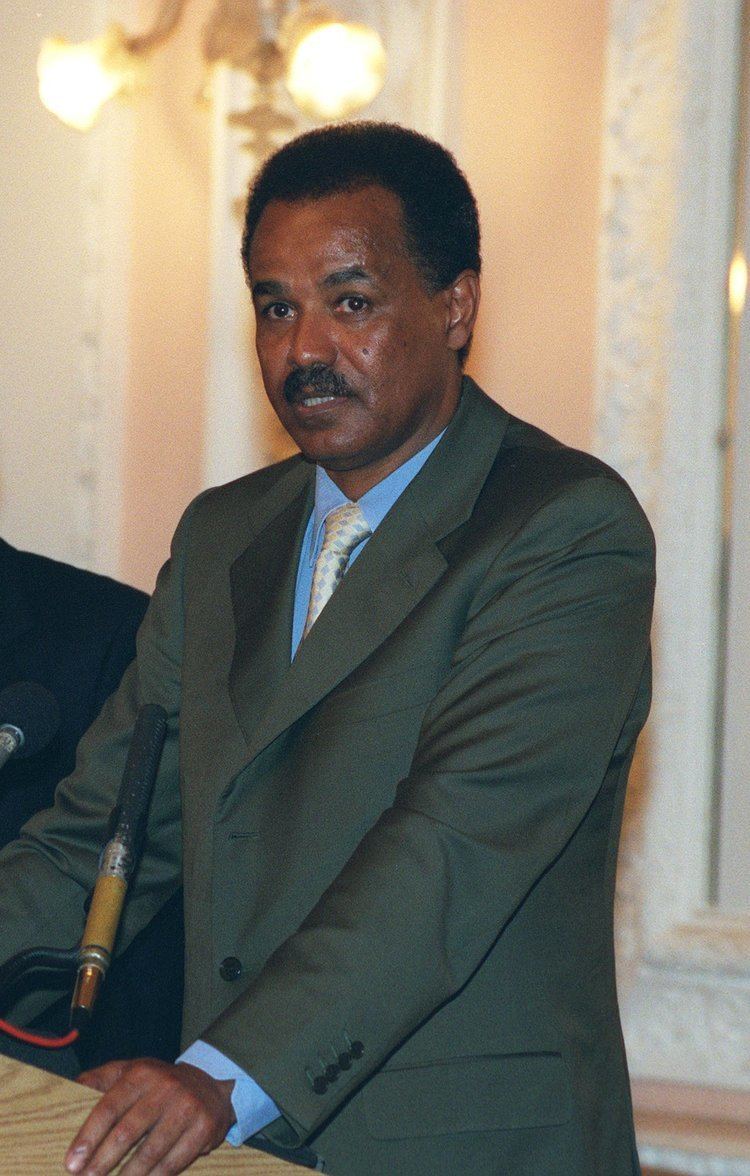 | ||
Office President of Eritrea since 1993 Children Berhane Afewerki, Elsa Afewerki, Abraham Isaias Afwerki Parents Adanesh Berhe, Abraham Afwerki Similar People Meles Zenawi, Mengistu Haile Mariam, Hamid Idris Awate, Sebhat Ephrem, Abraham Afewerki | ||
Talk to al jazeera president isaias afwerki
Isaias Afwerki (Tigrinya: ኢሳይያስ ኣፍወርቂ? [isajas afwɐrkʼi]; born February 2, 1946) is the first President of Eritrea, a position he has held since its independence in 1993. He led the Eritrean People's Liberation Front (EPLF) to victory in May 1991, thus ending the 30-year-old Eritrean Armed Struggle for Independence that the Eritrean people refer to simply as "Gedli [ገድሊ,which means STRUGGLE]". The EPLF adopted a new political party name, People's Front for Democracy and Justice (PFDJ), to reflect its new responsibilities. The PFDJ, with Isaias as its leader, remains the sole legal party of Eritrea today.
Contents
- Talk to al jazeera president isaias afwerki
- Eritrean leader gets rousing welcome as he returns home to Ethiopia
- Personal life and education
- In the early stages of the Eritrean Armed Struggle for Independence
- In the Eritrean Peoples Liberation Front EPLF
- Post Independence
- Criticism
- References
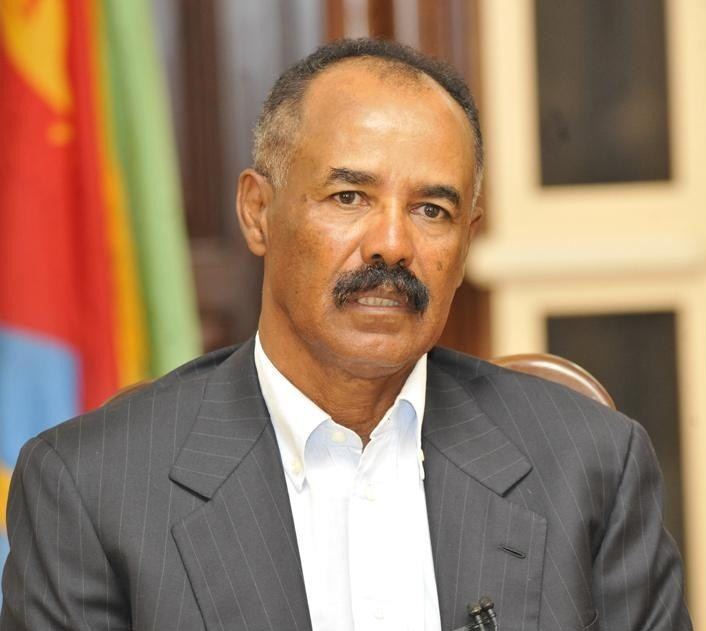
Eritrean leader gets rousing welcome as he 'returns home' to Ethiopia
Personal life and education
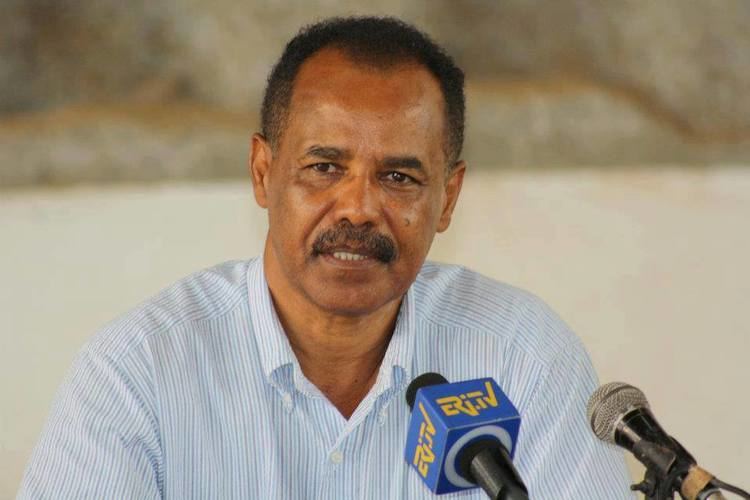
Isaias Afewerki was born in 1946 in the village of Tselot, Aba Shi'aul district in Asmara, Eritrea, to parents Afwerki Abraha and Adanesh Berhe. His father, Ato Afwerki, a native of Tselot village, just outside Asmara, was a low-ranking official working at a state-owned company, Tobacco Monopoly. His mother, Woizero Adanesh, was from Enderta Province. He hails from the Biher-Tigrinya ethnic group.
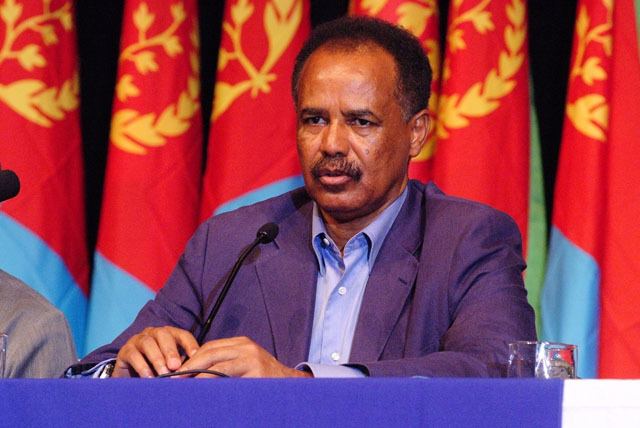
Isaias grew up in Asmara and graduated from Prince Makonnen High School (PMSS) in 1965. The good grades(which is 2.6 from 4 ) he scored in the General School Leaving Certificate Exams enabled him to be admitted to the highly competitive College of Engineering at Haile Selassie I University (now called Addis Ababa University) in Addis Ababa, Ethiopia. However, a year later in September 1966, he decided to join forces engaged in the Eritrean Armed Struggle for Independence.
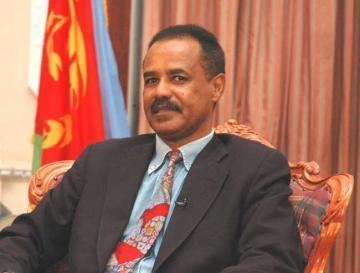
Isaias is married to Saba Haile and has two sons and one daughter.
In the early stages of the Eritrean Armed Struggle for Independence
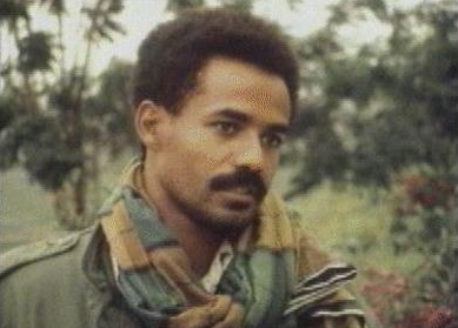
Eritrea's war for independence lasted from 1961 to 1991 and is referred to by the Eritrean people as "Gedli"[ገድሊ], which means struggle in the Eritrean Tigrinya language. Isaias became a part of the war in 1966, when he abandoned his engineering studies in Addis Ababa and left for Kassala, Sudan, joining the Eritrean Liberation Front (ELF) in exile. In early 1967, Isaias, along with Ramadan Mohammed Nour (later to be EPLF's Secretary General), was one of the first group of soldiers sent to China for military training. There they spent almost two years studying political ideologies and guerrilla warfare. Upon Isaias' return, he was appointed political commissar of the ELF.
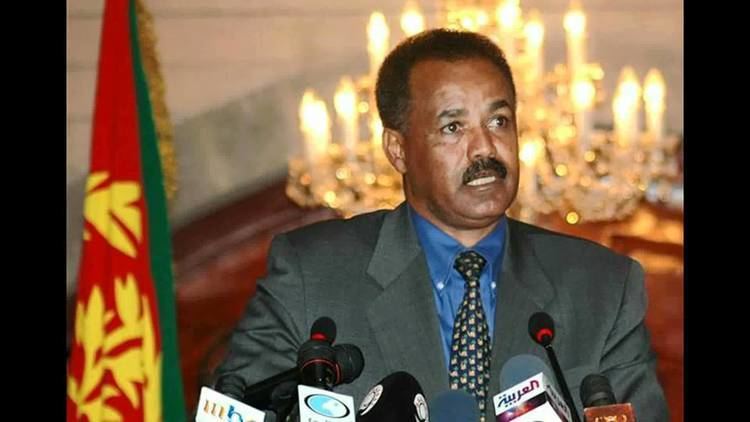
In 1969, ideological and tactical disagreements within the ELF led to three factions splitting from the ELF. One faction took refuge in the mountains of Sahel. Another group under command of Isaias, numbering less than a dozen, left for Eritrea's eastern escarpment. The third group headed off to Aden and returned by boat to Eritrea, landing south of Assab. These three groups would eventually join to become one under the name of the Eritrean Liberation Front-People's Liberation Front (ELF-PLF). When they formally merged in 1973, they changed their name to the Eritrean People's Liberation Front (EPLF).
In the Eritrean People's Liberation Front (EPLF)
While a member of the EPLF leadership, Isaias Afewerki, Mesfin Hagos,Tewelde Eyob, Major General Asmerom Gerezgiher, and Solomon Woldemariam distinguished themselves by authoring an important EPLF manifesto in 1970 titled "Our Struggle and its Goals". This manifesto placed strong emphasis on overcoming ethnic and religious differences and on launching a revolutionary struggle in the war for independence. In 1975, Isaias became chairman of the EPLF military committee. In 1977, under EPLF's first congress, he was elected vice secretary-general of the EPLF. He was elected secretary-general in 1987.
By May 1991, the EPLF, under Isaias' leadership, was able to control all of Eritrea and some its units entered the capital city Asmara— thus crowning the 30 years of armed struggle for Liberation of the Eritrean people with victory. In essence, Eritrea became a de facto independent country on May 24, 1991.
Post Independence
In April 1993, a United Nations-supervised referendum on independence was held, and the following month Eritrea achieved de jure independence. Isaias was declared the first head of state, a position he has held ever since the end of the war for independence.
During the first few years of Isaias' administration, the institutions of governance were structured and put in place. This included the provision of an elected local judicial system, as well as an expansion of the educational system into as many regions as possible. The EPLF renamed itself the People's Front for Democracy and Justice (PFDJ) in February 1994 as part of its transition to a political party.
Criticism
In June 2015 a United Nations panel accused Afwerki of human rights abuses by stating that he "has imposed a reign of fear through systematic and extreme abuses of the population that may amount to crimes against humanity" Amnesty International believes that the government of President Isaias Afewerki has imprisoned at least 10,000 political prisoners. Amnesty also claims that torture — for punishment, interrogation and coercion — is widespread.
In 2015 Reporters Without Borders ranked Eritrea under the government of President Isaias Afewerki last in its press-freedom index for the eighth year running.
